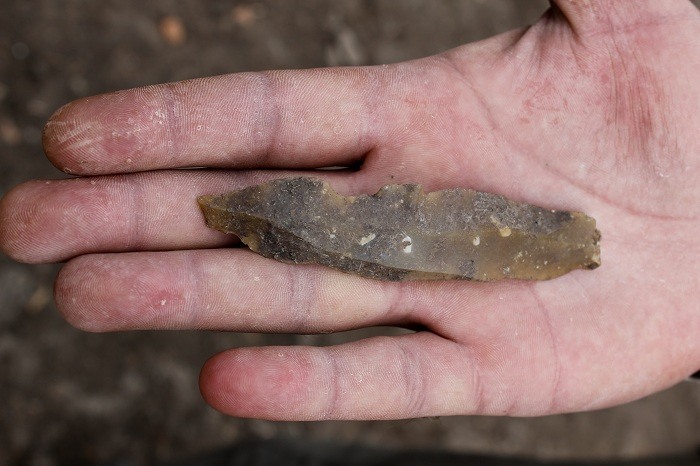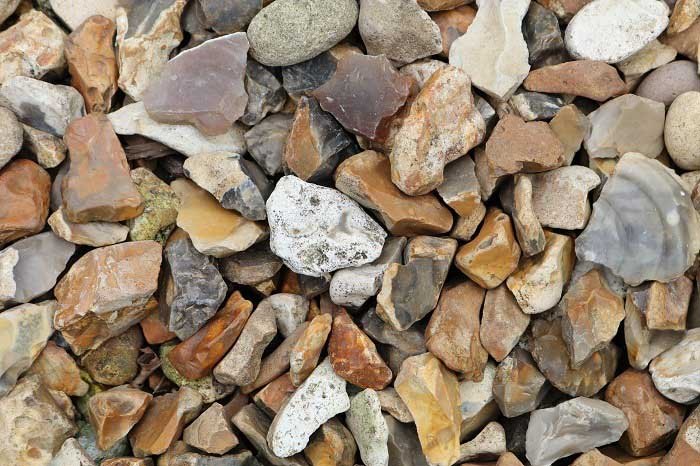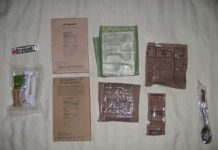Finding flint can be a very exhausting task especially when you do not know how to look for it. On several occasions when I was out flint hunting, I returned with nothing to show for it. Fortunately, my adventures gave me ideas on where to find flint easily.
Finding flint does not have to be that hard. All you need is a little know-how on how to prepare yourself for the hunt and what exactly you will look out for while out in the field.
What Is Flint Used For?
Flint (sometimes referred to as chert) is one of the earliest type of rocks that has been in use for centuries since the evolution of man. It was often used to forge knives, arrow heads, and the tips of spears among other uses.
Nowadays people mostly use flint to make fire when they are out in the wild. You may also need to find flint to add to your rock collection. Whatever your reasons are, knowing where to find flint can save you a lot of time and energy especially if you are more on an outdoors person.
Easy Steps On Where To Find Flint

1. Know Where Flint Occurs
Wanting to find flint is one thing while knowing where to find it is another. This should be the first thing that you find out. This therefore begs the question, where does flint form? There are places where flint occurs naturally everywhere while in other areas it is not abundant as much.
Tips to Help You Know Where Flint Occurs
a. Flints forms where water bodies or drainage features exist or have existed before. You can find them
- Along lakeshores and river beds
- Where oceans existed before. Therefore, search for them along beaches
- At construction sites. Construction rocks and stones are got from river beds so you might find flint where construction is taking place.
- Where there are gravel roads
Cherts are very hard and resistant to erosion. Even as other rocks get eroded by the water bodies, flint does not get affected and mostly ends up getting deposited along the shores and on the beds.
b. Make sure that you also familiarize yourself with the history of the area you live in
This may prove helpful as you may discover that your area may have flint so you do not need to go far to look for it, for example, places where Native Americans used to live will most likely have flint fragments that were used by them in the past.
c. You can also look for flint inside bigger limestone rocks or chalk
These rocks may have flint pieces inside when you break them. You can spot such rocks by looking for discolorations in them as flint will be slightly darker in color.
2. Know How To Spot Flint
Once you know the area where you will be going to look for flint, you also need to how to spot flint rock. Flints have certain characteristics that make them unique from other rocks. Here are a few of the properties to watch out for:
a. The Shape
Flint occurs in nodules or in form of fragments that may have taken certain shapes. They can be of round and smooth shapes or look like broken glass when they crack and break.
The round ones are mostly found inside limestone rocks or chalk. Fractured flints will have sharper edges and curves.
b. Their Color
Flint has a darker color than other types of chert and chalk. They usually occur in dark gray color or sometimes black. Other types of chert of chert may be yellow, white or maroon in color. It should therefore be easier to spot flint among them.
c. The Texture Of The Surface
Flint normally has a smooth glossy surface. If you find a rock that you seem unsure of its luster, simply use sand to rub its surface and if it reveals a glassy luster then you have got yourself a flint stone.
d. Their Hardness
Another characteristic to know if you have found flint is by testing the hardness of the stone. This can be done by simply using the rock to scratch a glass bottle. As explained earlier, flint is a highly resistant rock, so if the rock scratches the bottle then it might be flint.
Other Ways Of Testing For Flint
Another way to test if the rock you have is flint is by striking it with hard steel. If sparks begin to fly after several attempts, then the rock could be flint. When carrying out this test ensure that the edge of the flint is sharp and the stone is not damp.
The sparks are usually produced as a result of small fragments of iron being exposed to air and undergoing rapid oxidation. This is what enables a fire to be lit when you use flint to make a fire.
You should know that aside from flint there are also other types of rocks that are known to produce sparks too such as quartz.
Sound is also another factor that makes flint different from other rocks. When you hit flint against another rock or steel, it will produce a sound that has more of a “cling” to it. Other rocks produce dull sound that sound more like “clung”.
If the rock flakes when you hit it, then it could also mean that it is flint. Flint will develop sharp edges when you fracture and break it.
In Conclusion
Although flint may seem like a difficult rock to spot, by following the above steps you will that it is quite easy to know where to find flint even in the most difficult of places.
Also, remember to always be careful when you are handling flint so that you do not harm yourself. Try wearing protective gloves to keep your hands safe. Ensure you carry band aids and safety glasses too.
References:










